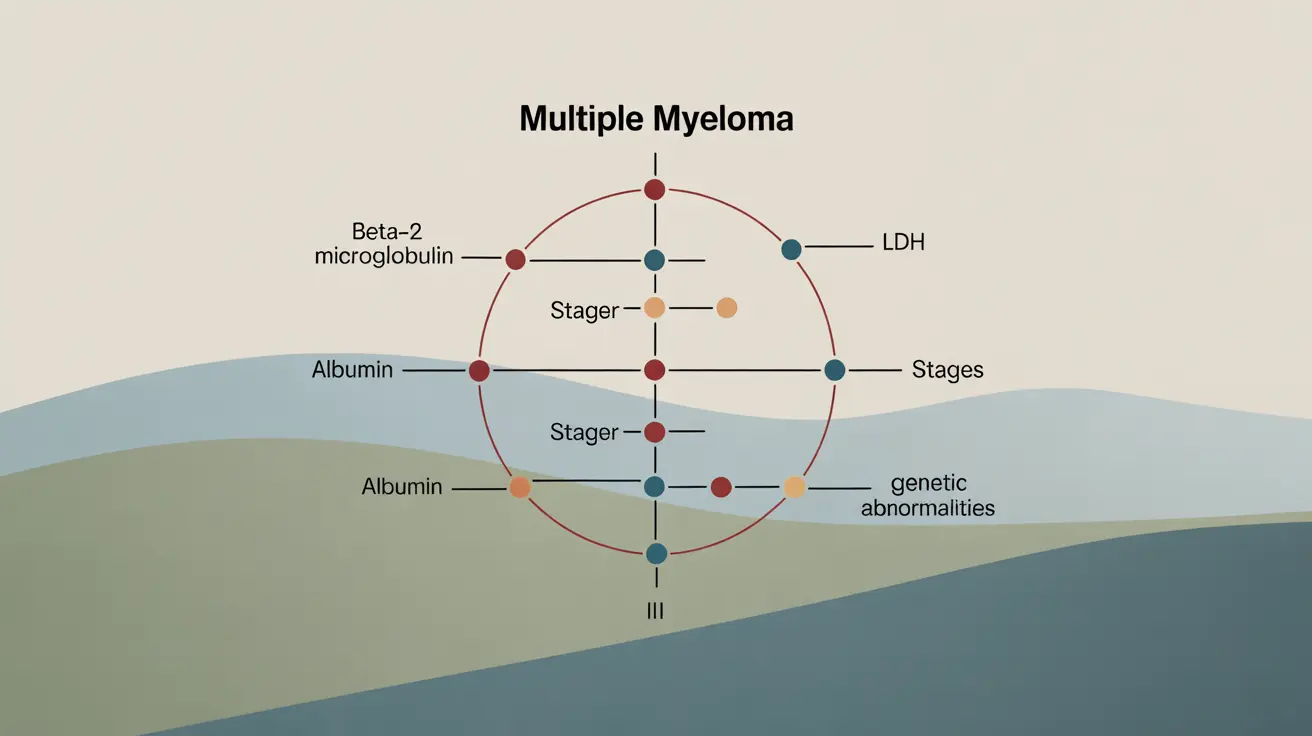Multiple myeloma staging is crucial for understanding the progression of this blood cancer and determining the most effective treatment approach. The staging process helps doctors evaluate the extent of the disease, predict outcomes, and develop personalized treatment strategies for patients. This comprehensive guide explores the different stages of multiple myeloma and what they mean for patients and healthcare providers.
What is Multiple Myeloma?
Multiple myeloma is a cancer that affects plasma cells, which are specialized white blood cells responsible for producing antibodies. When these cells become cancerous, they multiply uncontrollably and can cause damage to various organs, particularly the bones, kidneys, and immune system.
The Revised International Staging System (R-ISS)
The medical community currently uses the Revised International Staging System (R-ISS) to classify multiple myeloma stages. This system incorporates several key factors to determine the stage and prognosis of the disease.
Stage I
Stage I multiple myeloma represents the earliest stage of active disease and is characterized by:
- Serum beta-2 microglobulin < 3.5 mg/L
- Serum albumin ≥ 3.5 g/dL
- Normal LDH levels
- No high-risk chromosomal abnormalities
Stage II
Stage II multiple myeloma falls between stages I and III, meeting neither the criteria for stage I nor stage III. This intermediate stage often shows:
- Moderate levels of beta-2 microglobulin
- Variable albumin levels
- Some genetic abnormalities may be present
Stage III
Stage III represents the most advanced form of multiple myeloma, characterized by:
- Serum beta-2 microglobulin > 5.5 mg/L
- High LDH levels
- Presence of high-risk chromosomal abnormalities
Understanding Smoldering Multiple Myeloma
Smoldering multiple myeloma, sometimes referred to as stage 0, is a precursor condition to active multiple myeloma. In this state, abnormal plasma cells are present, but there are no symptoms or organ damage. Regular monitoring is essential as approximately 10% of patients per year will progress to active multiple myeloma during the first five years after diagnosis.
Laboratory Markers and Their Significance
Several key laboratory markers play vital roles in staging multiple myeloma:
- Beta-2 microglobulin: Indicates tumor burden and kidney function
- Albumin: Reflects overall health status and nutrition
- Lactate dehydrogenase (LDH): Indicates disease aggressiveness
- Genetic markers: Help determine risk level and prognosis
Treatment Approaches Based on Stage
Treatment strategies vary depending on the stage of multiple myeloma and may include:
- Early stages: Careful monitoring or less intensive therapy
- Advanced stages: Combination therapy with multiple drugs
- All stages: Supportive care to manage symptoms and complications
- Clinical trials: May be available for eligible patients at any stage
Frequently Asked Questions
What are the different stages of multiple myeloma according to the Revised International Staging System (R-ISS)?
The R-ISS classifies multiple myeloma into three stages: Stage I (early disease with favorable markers), Stage II (intermediate disease), and Stage III (advanced disease with high-risk features). The classification is based on beta-2 microglobulin, albumin, LDH levels, and chromosomal abnormalities.
How do laboratory markers like beta-2 microglobulin, albumin, and LDH affect multiple myeloma staging?
These laboratory markers are crucial for staging. Beta-2 microglobulin indicates tumor burden and kidney function, albumin reflects overall health status, and LDH levels indicate disease aggressiveness. The combination of these markers helps determine the stage and prognosis.
What genetic abnormalities influence the prognosis and staging of multiple myeloma?
Certain chromosomal abnormalities, such as del(17p), t(4;14), and t(14;16), are considered high-risk features that can negatively impact prognosis. These genetic markers are incorporated into the R-ISS staging system and help guide treatment decisions.
How does the stage of multiple myeloma impact treatment options and intensity?
Treatment intensity typically increases with advanced stages. Early-stage patients may receive less intensive therapy or careful monitoring, while advanced-stage patients often require aggressive combination therapy. The stage helps determine the optimal treatment approach and timing.
What does smoldering (stage 0) multiple myeloma mean and how is it managed?
Smoldering multiple myeloma is a precursor condition where abnormal plasma cells are present but cause no symptoms or organ damage. Management typically involves regular monitoring without immediate treatment, though some high-risk patients may be candidates for early intervention trials.




